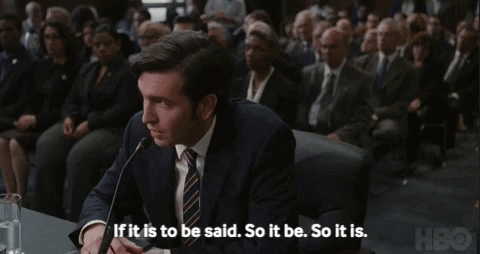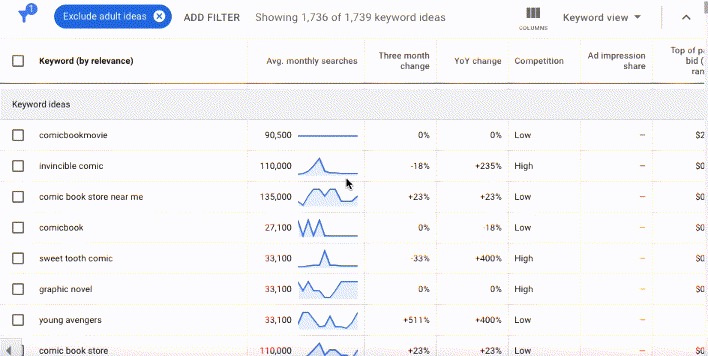This essay originally was published on November 11, 2021, with the email subject line CT No.102: "Brevity works better." It's the second of three essays, the other two below:


Griping about writing style is so much easier than writing my usual essays. It's so easy to let annoyances out rather than affirm. I admittedly feel squicky about this one, but also, I wish I could read better writing at work.
Disclaimer: If you're not a native English speaker and are not regularly publishing newsletters or content in English, this advice is not for you. I am in awe of anyone who writes or speaks in their non-native language, especially in business, since I, like many Americans, have no comprehension of how fluency in multiple languages feels. Keep on writing; you're doing great.
Today's advice is for folks who regularly write content for publication in their native language of English, either in a newsletter or marketing content or blog posts or monographs for well-respected tech and design publishers:
Y'all need to write shorter sentences.
In newsletters, in UX writing, in "SEO blog posts," in white papers and ebooks: write shorter sentences. Write with specificity and clarity. Value brevity, please. For our eyes. For anyone reading in translation. For anyone with difficulty comprehending long sentences. For the brains of everyone who thinks B2B writing is on the spectrum of boring to terrible.
The two-clause rule of thumb
Not every sentence needs to sell never-worn baby shoes, but we can certainly limit most to two clauses. Long sentences are harder to read on a computer, whether you're a new to English or a lifelong reader. For accessibility, shorter sentences are almost always better.
Why do we think sentences need to be so long to be business-like? In grammar school, we learned that sentences with complex clauses are the sign of more mature writers. We learned to read and write more complex sentences each passing year, so we could eventually read and write fluently and critically. But our teachers were ensuring we passed our reading comprehension tests, which covered great literary works and not some startup's marketing ebook.
Complex sentences may be better for some formats, like world-building fiction. But mass communications of the 20th century developed more streamlined methods designed to get the point across, quick. That narrative simplicity worked, probably too well, but let's apply some brevity lessons to 21st century business content.
When writing business reports or web copy, think daily newspaper and not that essay written five hours before it was due. Start with critical info. Add crucial details. Tell a story for added engagement. Omit filler whenever possible.
The automated reading score that makes bad sentences seem good
Overly complex sentences are "better" in the Flesch–Kincaid grade level formula that linger in word processors and content scoring tools. I've written about the bullshit that is Flesch–Kincaid before: the American military developed the method in the 1970s, and it scores sentences by comparing ratios of characters, syllables and words. Flesch–Kincaid was never based on actual human reading comprehension. It's certainly not a user-tested, human-centered metric appropriate for the 2020s.
Other readability metrics have been developed in the decades since, but like all single-use content metrics technologists champion, they misrepresent communication's complexity. All readability metrics measure are characters or syllables per word and words per sentence. They do not measure actual human readability, a score best determined by other humans.
UX writers, we can do better! Y'all are good at questioning norms, so please question Flesch–Kincaid and any automated content readability scoring system.
Longer sentences translate to higher grade levels with Flesch–Kincaid, so content departments trying to hit a 5-8 "grade level" add unnecessary complexity to perfectly fine, clear sentences to make them "8th grade level." The output is garbage like this:
It is important to know that this solution is the best one to drive results at this point in time.
Flesch–Kincaid says seventh graders can understand what that sentence means, which is cool because I can't. I'm an adult, and that sentence means nothing to me. If it means something to you, fill me in.
I have nothing against short words and think they are wonderful! Not every sentence should be high school-level. But when a clause-heavy sentence features too many vague, tiny words, that's called writing like a seventh grader instead of at a seventh-grade reading level.
The punctuation mark that rarely serves its purpose
Why do business writers like semicolons so much? Is it because they think it makes them seem smarter?
A properly used semicolon is a bit of a flex, sure, but it's only impactful if the semicolon is absolutely necessary to flow or understanding of an idea. And you can only use one semicolon per three paragraphs, or else you look flowery and noncommittal.
Usually a semicolon means you didn't start a new sentence when you should have. Are your clauses two separate thoughts? If so, they should probably be two separate sentences.
I know younger people think periods at the end of texts are "mean" or whatever, but you're not writing text messages. You're writing copy for people to scan, absorb and read... all on their tiny handheld screens filled with lines and lines of text, interrupted by ad units, scrolling forever.
Periods and capital letters provide clean breaks and points of comprehension. Semicolons scatter words across a paragraph, leaving your readers digging for an argument among gobbledygook.
Leave semicolons to the professional writers. Strive to write succinctly, particularly if you're asking people to read to your business thoughts without mockery. Some popular newsletter-ers may shift markets with a semicolon every three sentences but consider that their arguments may be as half-assed as their writing style.
About those "longer word counts for SEO"
You may counter my advice today with "but Deborah you said we should write 1,500 word blog posts for SEO." You're right! Longer content generally performs better in organic web search.
Longer content indicates better research, nuance, and complexity. Google likes all that, along with detail and specificity that aligns with words in your topic or entity. Google may also be ok with filler words, but people generally are not and don't stick around or convert after they encounter tedious pages. Why read 500 words if only a third have a clear meaning?
A well-written 800-word essay filled with specific verbs and nouns, structured content, original research, and clear headings will rank better than a 1,500-word essay stuffed with filler like you're trying to make the required page count for the assignment.
I'll address the word count conundrum more thoroughly in a future issue, one with more data and fewer writing preferences. But for the moment: write with less filler, and you will be rewarded.
Filler words to avoid in all writing, but especially business writing
Useless filler words and added clauses make content harder to read. Sure, some extra words help with voice, but voice should never come at the expense of clarity.
My suggestions here only apply to writing. In speaking, filler words assist comprehension, giving the brain a break to process larger concepts. So if you're scripting or podcasting or live social audio-ing or just talking, the below words are fine.
But writing! Writing for publication implies the words have been chosen to achieve a goal, that the writer applied style and logic to their sentences and paragraphs. In long-form writing, editing and trimming are part of the process. Not every sentence needs to be perfect, particularly in digital formats, but let's aim for some semblance of style or craft.
Useless filler words to avoid, with explanations when needed:
- In order to - never necessary, no matter how common. Should only be used if you have many complex concepts and your reader needs a breather.
- To help to, to help [verb], to be able to, can [verb], or doing [verb] or any other helping verb - almost never necessary in business writing. If one verb works, use one verb.
- I think, I suspect, I wonder, I believe, It seems that - Fine once in an essay if you're positing a theory, but men are permitted to write and speak these as often as they'd like in business, while women are told they have imposter syndrome when we say "I think" too often. My solution: write what you mean and red line these words 90% of the time.
- Just, mostly, clearly, indeed, very - Totally guilty, but listen to your grammar checker and kill your adverbs when you can.
- What's important to note, the impressive thinking is that, this is important because, what's interesting about this is - "Interesting" is a word to bide time when you're forming an opinion or when you don't want to admit find someone's observations tedious. If it weren't interesting, impressive or important, you wouldn't be writing about it, so why use half your sentence talking about it?
- It used to be that, that is what allows for, the solution is to, the reason is that, all similar piles of useless phrases, cluttering up your paragraphs, bogging down your meaning.
- Due to the fact that - Because is a fine one-word substitute.
- All of these, a lot of - Cut unless absolutely necessary for rhythm
- Often and usually - Limit these. And eliminate oftentimes, a sure sign of hot air.
- For example literally every time you write an example. If you're writing well, your examples will be evident. One "for example" per essay is fine.
- First, second and third every time you write any multi-pronged point (or their 19th century cousins firstly, secondly and thirdly). Use a numbered list or just massage your transitions, like, a little bit.
Stopping here for today, but those phrases are what I pulled from a brief hate-read of popular tech and media newsletters.
In brief, the lesson: don't write how Greg from Succession sounds.

Hand-picked related content







